

3) Highstand Systems Tract (HST)
a) The time of maximum marine transgression on the shelf marks:
- The updip termination of the marine condensed section ;
- The beginning of net regression as the rate of sediment supply begins to overwhelm the low rate of relative coastal onlap ;
- The displacement of the shoreline position back toward the shelf margin ;
- A downlap surface on the condensed section as highstand sediments prograde.
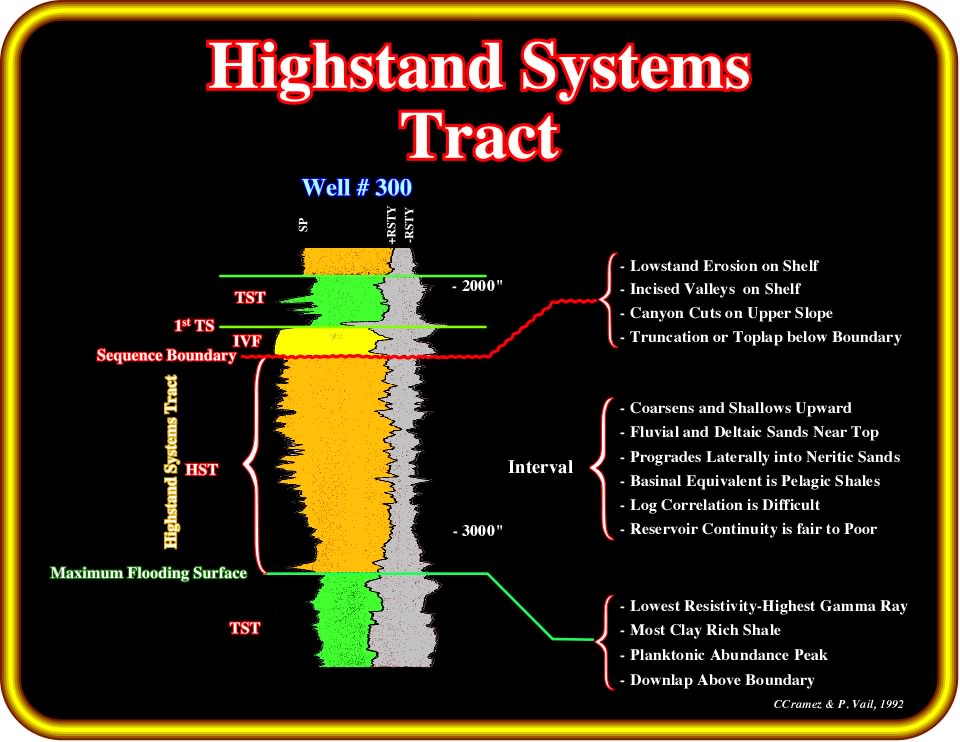
Plate 473- The main characteristics of highstand systems tracts are summarized. The upper limit is always a sequence cycle boundary. The lower limit is often the maximum flooding surface of the underlying transgressive systems tract, but, in certain cases, it can be also a sequence cycle boundary. The log pattern is typical of a coarsening and thickening upward interval.
b) During the highstand systems tract time the rate of eustatic rise slows, reaches highstand conditions and begins to reverse to a slow rate of eustatic fall ;
c) In the siliciclastic environments fluvial channel sands are the most common reservoirs;
d) A carbonate highstand systems tract reservoirs consist of a wide variety of shelf limestones and dolomite textural types, but typical are packstones sediments in which the sand-size grains are skeletal fragments, oolites, pellets or pisolites ;
e) Trapping of hydrocarbons in this systems tract is a problem because leakage paths are likely to exist into updip sediments ;
f) Structural closure entrapment is commonly needed ;
g) Regressive carbonate/evaporite sequences in which salt and anhydrite progressively move in toward the basin can result in a very important stratigraphic entrapment of hydrocarbons in the interbedded marine carbonates that form downdip from sabkha and evaporite paleoenvironments ;
h) As highstand systems tract sediments prograde across the outer shelf and shelf margins they may create their own structural traps ;
i) Differential loading of underlying mobile sediments results in development of hydrocarbon traps by structures contemporaneous with deposition ;
j) Reservoir characteristics of fluvial and deltaic highstand sediments vary widely but complex reservoir continuity and diagenetic cementation are common problems.
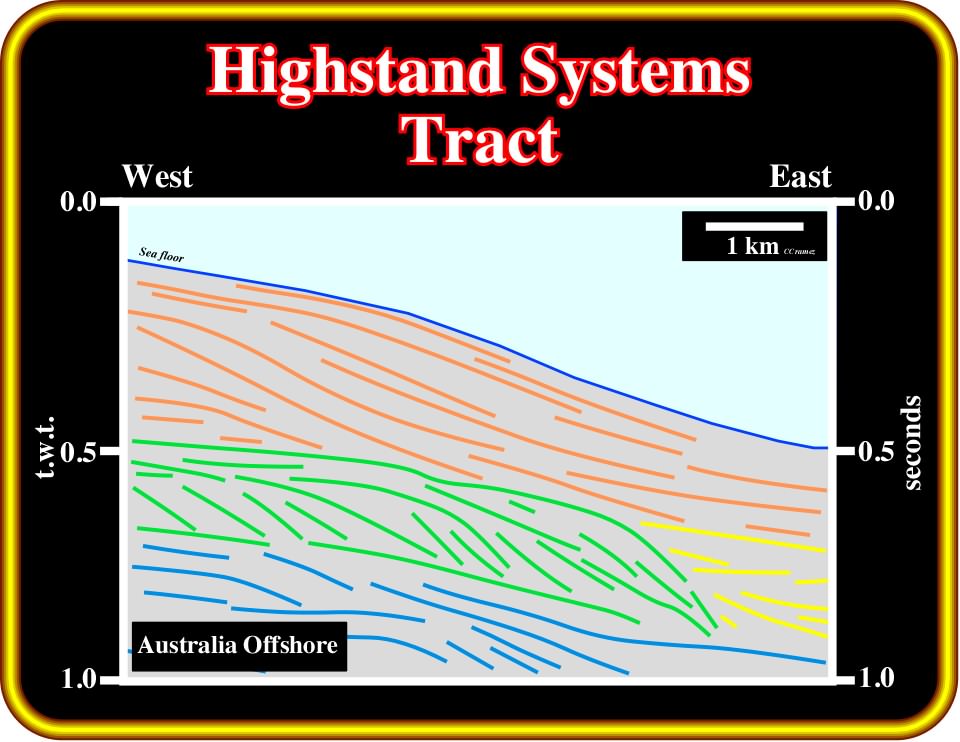
Plate 474- On this first step interpretation of seismic line from offshore Australia, three highstand systems tracts are easily recognized above transgressive systems tracts. Their lower limits are underlain by obvious downlap surfaces, while the upper limit is the upper sequence cycle boundary, i.e., an unconformity. Very often, as is the case for two lower highstand systems tract seismic lines, incised valleys can enhance the upper limit of the highstand systems tracts (see the proposed interpretation of this line on Plate 475).
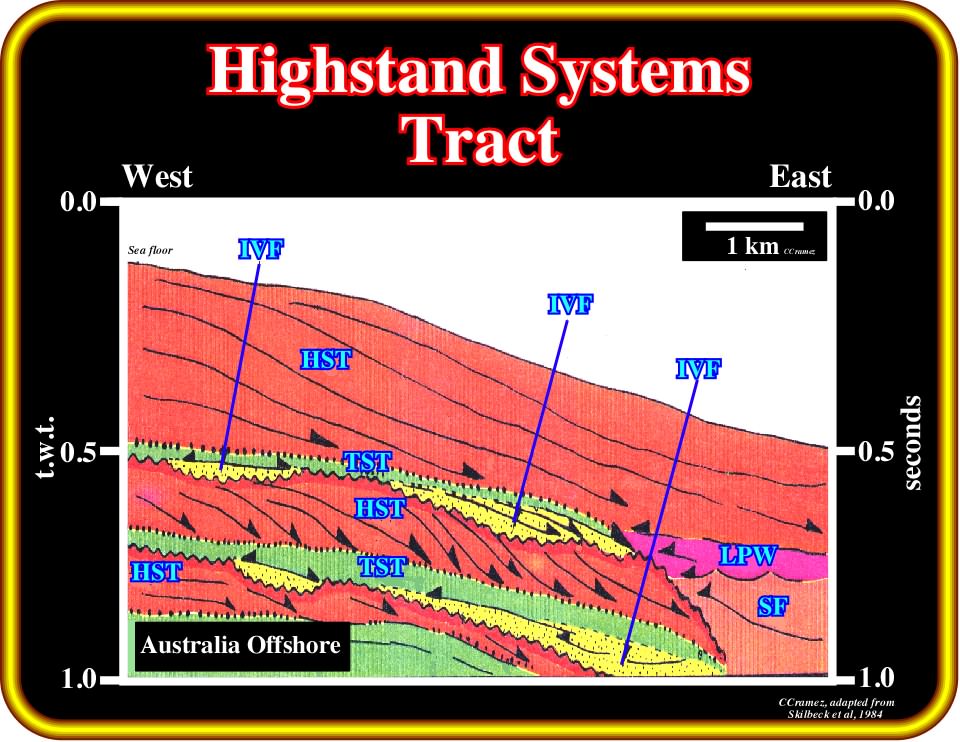
Plate 475- On this tentative interpretation of the previous line (Plate 495), two highstand systems tracts are limited by unconformities underlain by incised valleys, which were filled by relatively shallow water sediments deposited during the upper lowstand prograding wedge time. The incised valley fills being fossilized by relatively thin transgressive systems tracts, their maximum flooding surface (fossilized later by the downlap surface) mask slightly the upper limit of the highstand systems tracts.
Exploration Applications:
1) Reservoir :
- Discontinuous fluvial, deltaic facies predominate ;
- Minor shoreface facies.2) Migration :
- Gas and lean oil typical from contemporaneous source ;
- Good oil source often requires vertical fault conduit.3) Source :
- Deep source typical ;
- Often a problem ;
- HST shales often lean and gas prone.4) Trap :
- Predominantly structural ;
- Early timing critical.5) Seal :
- Leaks updip into TST ;
- Leaks laterally ;
- Flooding surface usually top seal.
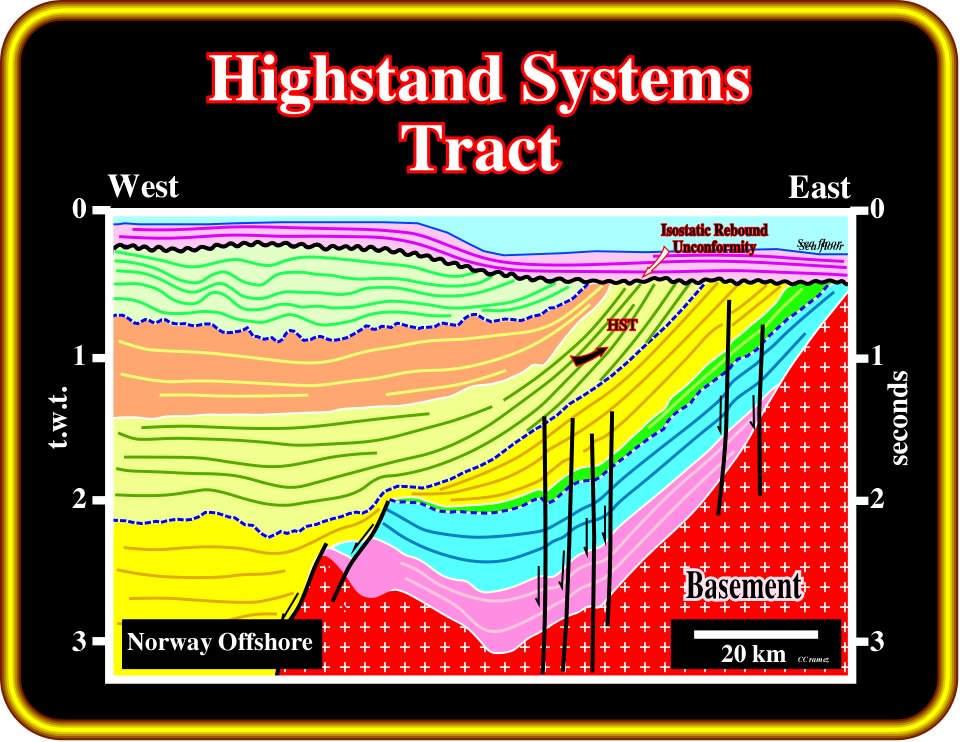
Plate 476- On this tentative interpretation of a seismic line line, from the North Sea, the isostatic rebound (uplift of the continental crust following deglaciation) tectonically enhanced the internal configuration and reflection terminations associated with the highstand systems tracts, which are here limited between downlap surfaces and unconformities as illustrated next (Plate 477).

Plate 477- This tentative interpretation of the previous seismic line (Plate 476) suggests that a staking of transgressive and highstand systems tracts have been uplifted following the deglaciation. The highstand systems tracts (HST) have a forestepping geometry. They overly, in downlap, the transgressive systems tracts (TST, in green), which slightly thicken landward due to their backstepping geometry. They are limited between unconformities and downlap surfaces.
Exercises:

Plate 478- On this close-up of a first step tentative interpretation of a seismic line from offshore China, pick the main sequence cycle boundaries and color, with the conventional colors code (HST in orange, TST in green, LPW in light violet, SF in light pink, BFF in yellow, IVF and SCF in light yellow), the different systems tracts. Then underline and name the different types of reflection terminations. Criticize your interpretation with the one proposed below.
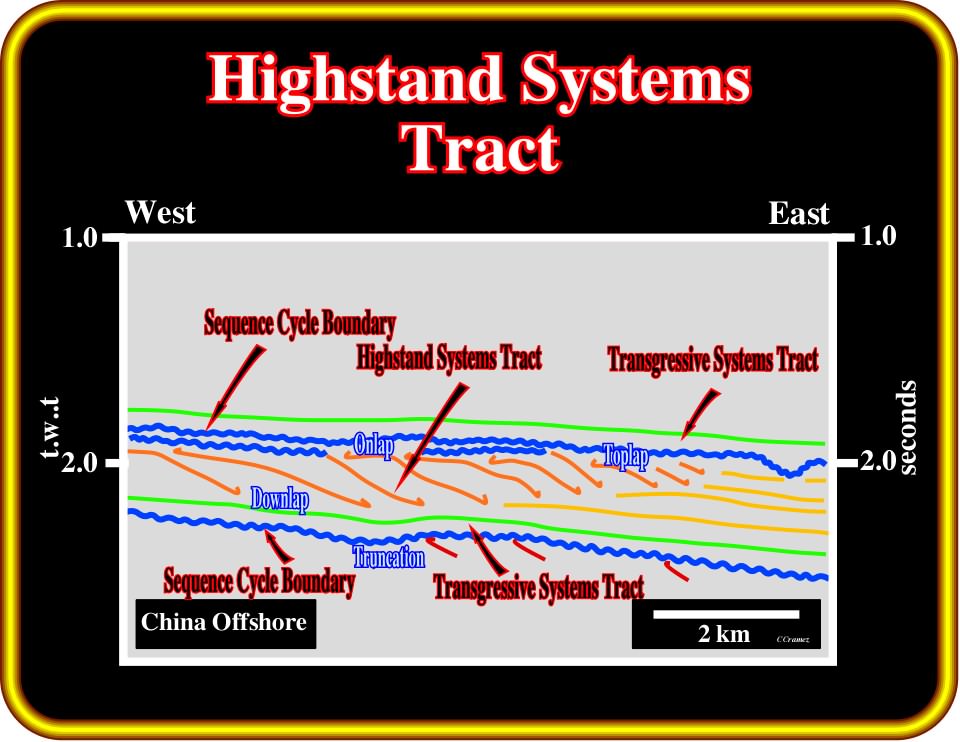
Plate 479- On this interpretation of the previous line (Plate 478), a sequence cycle bounded by two unconformities is easily recognized when the onlap, downlap and toplap surfaces, defined by the reflection terminations, are well picked.

Plate 480- On this first step tentative (offshore Angola), pick the reflection terminations and then, the unconformities bounding the different sequence cycles. Are these sequence cycles complete or incomplete? Justify your answer and criticize it as well as the proposed solution illustrated in next plate.
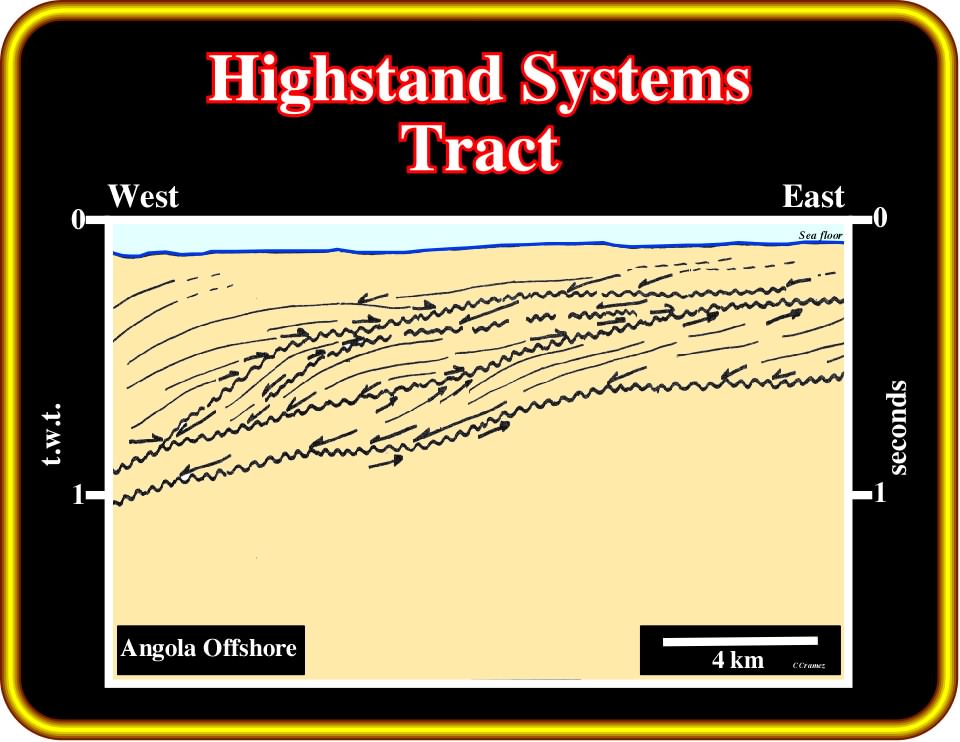
Plate 481- Here, the majority of the reflection terminations are indicated, which allows a relative correct picking of the principal sequence cycle boundaries, that is to say, picking of the unconformities. The sequence cycles are mainly incomplete since just the highstand systems tract is obvious, except in the uppermost interval, in which a lowstand prograding wedge is likely.